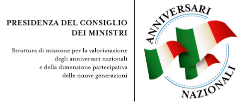Egan, Daniel
Gramsci's War of Position as Siege Warfare: Some Lessons From History
This paper addresses Antonio Gramsci's concepts of war of position and war of maneuver and their relevance for radical political strategy by way of a history of siege warfare. Gramsci argued that the war of manoeuvre, the direct assault against the state, was no longer relevant for revolutionary strategy in the capitalist core. Instead, political strategy must take the form of a war of manoeuvre, a protracted political-cultural struggle against the hegemonic power of the ruling class which Gramsci likened to siege warfare. A review of the history of siege warfare has two important conclusions relevant for a Gramscian political strategy: (a) the relative balance of forces in favour of the defence can be overcome, but this requires an understanding by a besieging force of the weakest point of defence; and (b) siege and assault are not alternatives but are inseparable in that, the success of a besieging force is predicated on the real or perceived threat of assault against defenders. These conclusions, in turn suggest that (a) political siege warfare cannot be a decentralised multiplicity of struggles but instead requires some form of leadership that coordinates the forces laying siege to the ruling class, and (b) a political war of position cannot postpone consideration of the war of manoeuvre into the future, but rather must be informed by the strategic questions more commonly associated with that form of political strategy.
| Lingua | eng |
| Nomi |
[author] Egan, Daniel |
| Soggetti |
Guerra Di Posizione
Rivoluzione
War of Position
Revolution |

